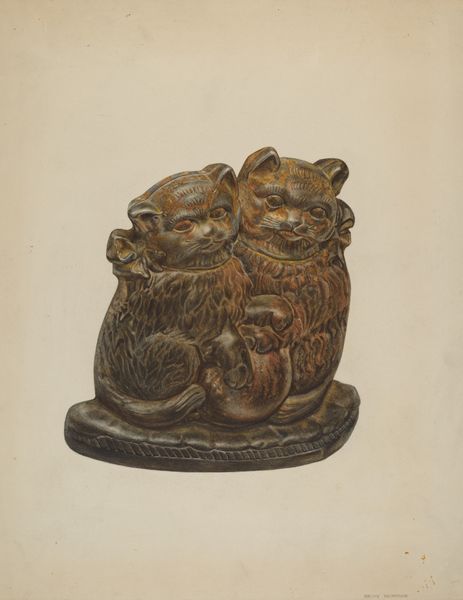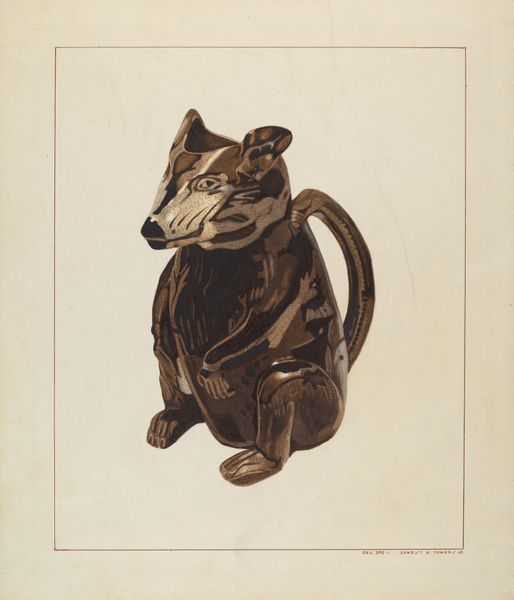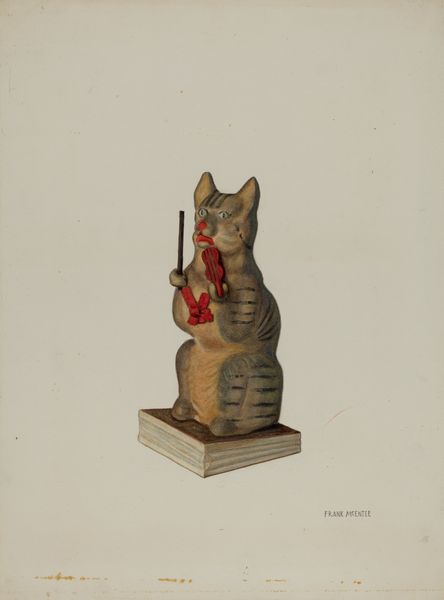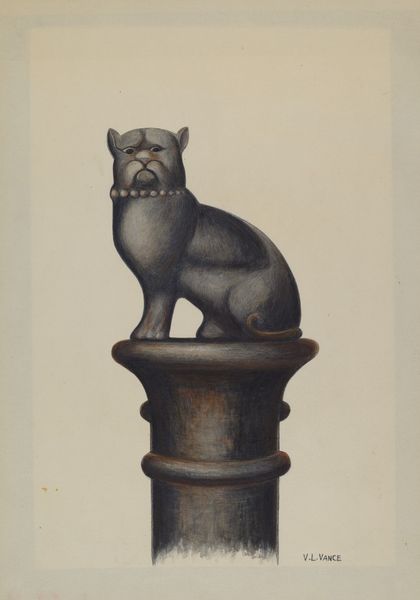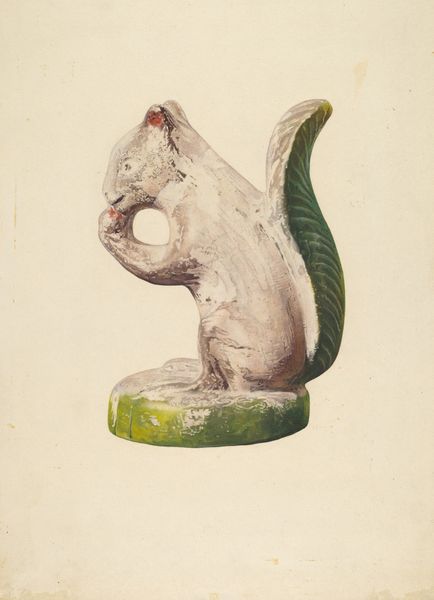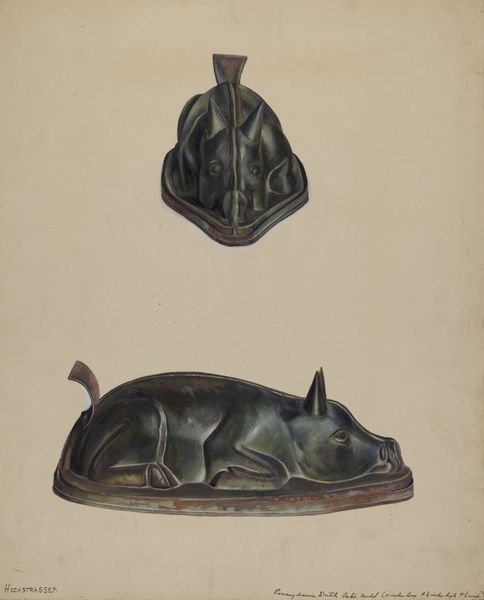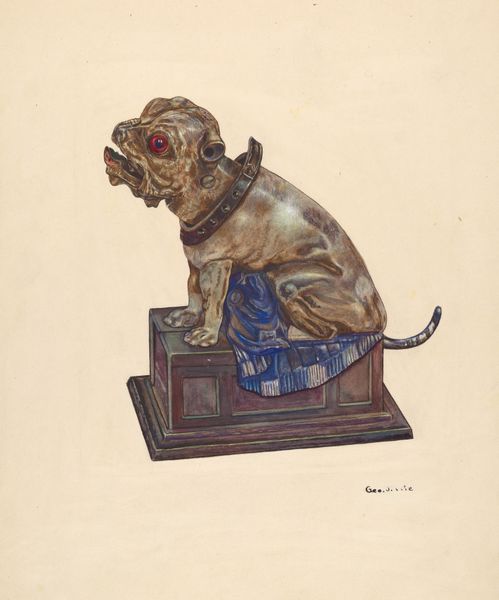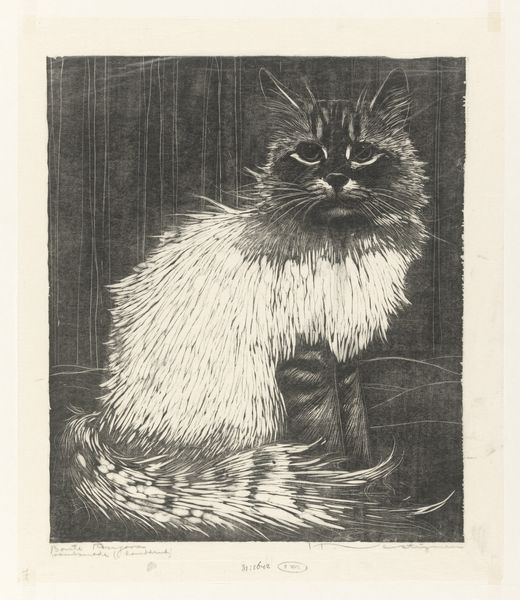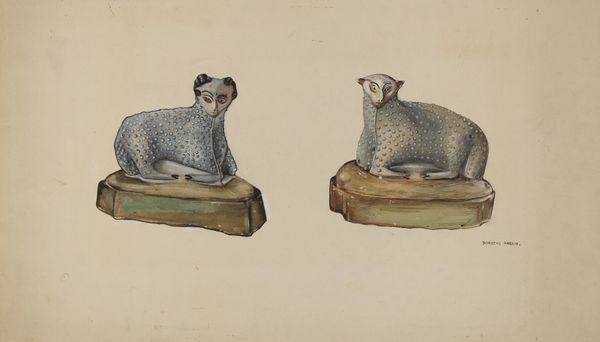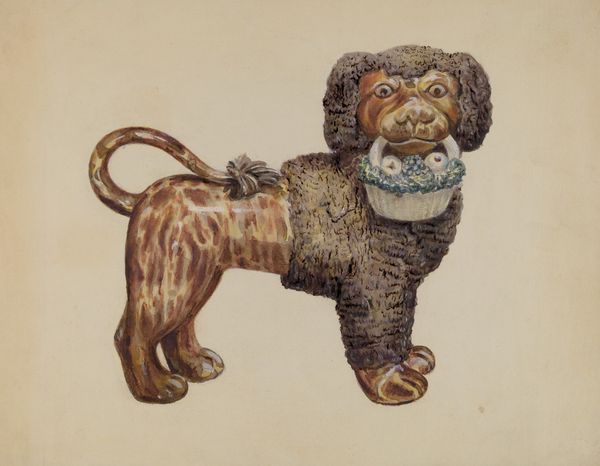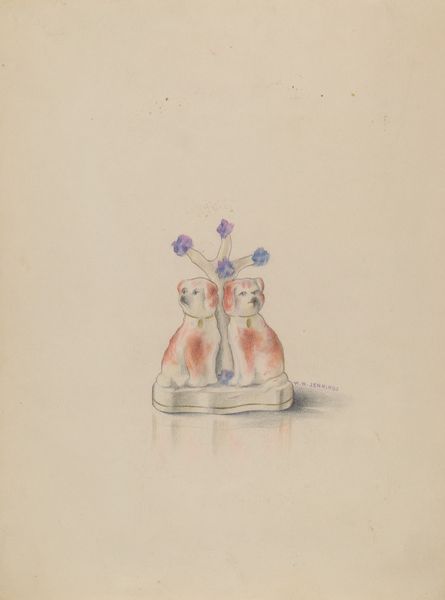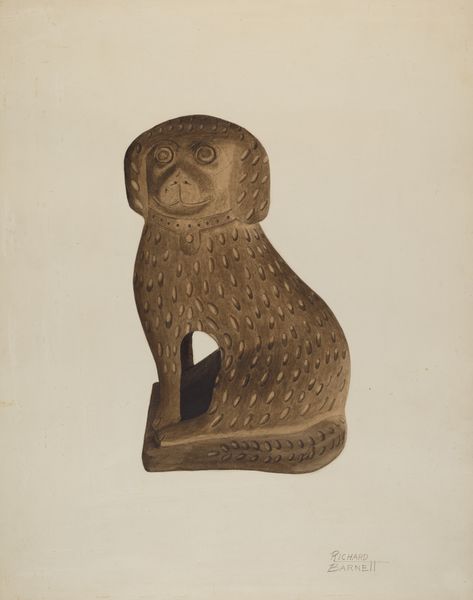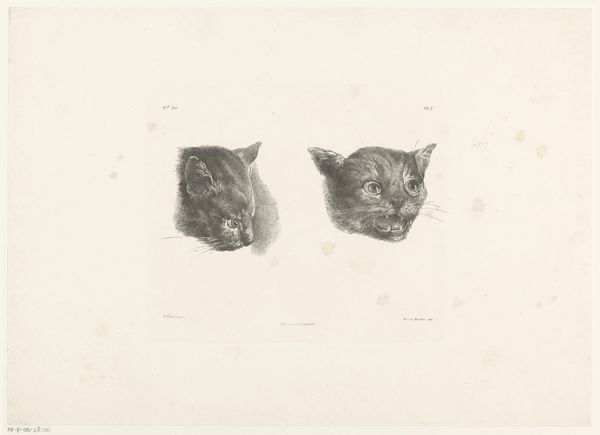
drawing, sculpture, pencil, wood
#
drawing
#
figuration
#
pencil drawing
#
sculpture
#
pencil
#
wood
Dimensions: overall: 31.4 x 32.4 cm (12 3/8 x 12 3/4 in.)
Copyright: National Gallery of Art: CC0 1.0
Curator: This work, crafted around 1937, presents us with "Door Stop" by H. Langden Brown. It appears to be a pencil drawing, possibly a preparatory sketch, detailing a wooden sculpture. Editor: My immediate reaction is...cozy. Those little cats, perched on what looks like a cushion, huddling together - it feels sentimental, almost melancholic. There's something about the muted palette that evokes a sense of faded domesticity. Curator: Yes, and understanding its place in the artistic landscape, we must consider how depictions of animals served varied purposes. At times like the interwar period, domestic imagery provided familiarity, a sense of safety and refuge in uncertain times, which shaped the public appreciation for such art. Editor: I see your point, absolutely. But what’s interesting here, is how it simultaneously seems to reflect something deeper about relationships and support systems. They're linked; one seems to have an arm around the other, really embodying this sense of connection. How does this drawing act as a window into the societal pressures on people and the refuge that those structures would come to serve during times of economical and societal difficulty? Curator: Indeed. Note too the object's title, “Door Stop.” As such, beyond mere decorativeness or representing interpersonal bonds, this sculpture also addresses issues of function and class. A hand-carved doorstop would probably stand to be somewhat high end when compared to it’s metallic counterpart. We see it more in homes and businesses to create aesthetic, or at the very least present that persona. Editor: Precisely! It speaks volumes about consumerism. It's a humble subject matter transformed into a coveted object. It becomes loaded with commentary of gender expectations within home life: it speaks of security, comfort, yet also subtly hints at expectations that society had for gender roles inside households. What this domestic idol of a cat and a household icon stands for is the relationship within homes and within a period of cultural changes and gender dynamics in the workforce. Curator: I think understanding artwork like the doorstop provides a broader canvas onto the nuances that we are looking for: the intersections between material culture, representation, societal narratives during those times. Editor: It makes me rethink my initial “cozy” assessment. This drawing provides an intriguing viewpoint of an era defined by uncertainty and complex social changes, now represented via this pencil draft of a cats hugging on top of a cushion doorstop. It is a visual echo of social fabrics.
Comments
No comments
Be the first to comment and join the conversation on the ultimate creative platform.
